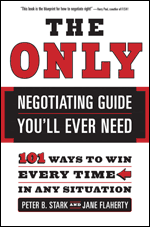Summary: Moving a counterpart toward an unpleasant outcome, then threatening to push.
When both sides in a negotiation have a great deal to lose if the negotiation fails and a great deal to win if it succeeds, the You’ll Be Sorry tactic can be useful. One counterpart pushes the other right up to the edge of some terrible outcome, then threatens one final shove.
Example
Lee Iacocca, former chairman of Chrysler Corporation, used this tactic of pushing his counterparts to the brink when he was negotiating with the automobile unions in the late 1970s. Iacocca’s goal was to have the unions accept a final wage package of $17 per hour. The union would not settle for any less than $20 per hour. One bitter night, Iacocca addressed the union negotiating committee. “It was one of the shortest speeches I have ever given,” he later recalled. He told the committee, “You’ve got until morning to make a decision. If you don’t help me out . . . I’ll declare bankruptcy in the morning and you’ll be out of work. You’ve got eight hours to make up your minds. It’s up to you.” In this example, Iacocca practiced You’ll Be Sorry, forcing the unions to the edge of the cliff and then threatening to push. Although the unions did concede, this historic Chrysler story turned out to be a win-win for everyone: the workers, the government, the company, and Lee Iacocca.
Counter
If a counterpart uses You’ll Be Sorry against you and you believe that your counterpart has the power to back up the threat, you have two choices: You can utilize These Boots Are Made for Walking and accept the consequences, or you can decide what is most important to you and use the Trade-Off Concession to negotiate other deal points.
Have you used or encountered this tactic in your negotiations? If so, how’d it go?




They signed up.